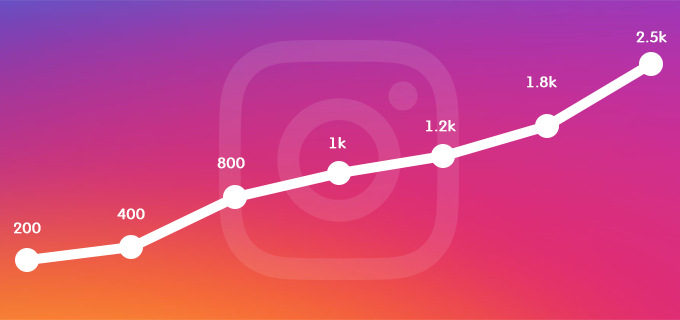Instagram offers businesses two main options for getting their content seen by more users: boosting posts and placing ads. While both increase reach, they work differently and serve distinct purposes. Understanding the key differences allows you to create an optimal Instagram marketing strategy.
Boosting a post amplifies its reach to a wider segment of your existing audience for a short period. Instagram ads let you precisely target new audiences outside your current followers and run campaigns continuously over time.
So boosting works well to maximize engagement on your top-performing organic content. Ads help you efficiently acquire new followers and promote your brand to specific demographics. We’ll compare the critical differences between boosted posts and Instagram ads so you can choose the best approach.

How Does Boosting a Post Work?
Boosting means paying Instagram to show one of your posts to more users for a defined period. It appears in the same format as your regular feed posts.
You simply select an existing post you want to boost. Set a daily budget and duration. Then Instagram pushes it out to a broader portion of your followers and people similar to your followers.
Benefits of Boosting Posts
- Quickly expands reach of highly engaging posts
- Leverages your best organic content
- Flexible, can start and stop any time
- Budgets as low as $1/day
- Appears in the main Instagram feed
Boosting is ideal for increasing visibility of your most popular posts. For example, boost a post after it performs well organically to capitalize on the momentum. The post looks the same as normal and reaches people already familiar with your brand.
You can start and stop boosts anytime. It’s a simple way to scale up posts with high engagement without the need for upfront ad creative. Minimum budgets are as low as $1 per day. And you only pay when the boost is active.
How Do Instagram Ads Work?
Instagram ads allow you to show your posts and products to new audiences who don’t yet follow you. You have full control over targeting specific demographics and placements.
Ads appear in the Instagram feed just like regular posts. But you can also opt for formats like Stories ads or ads in Explore.
To run an Instagram ad, you:
- Choose objective – awareness, traffic, conversions etc
- Create ad content that stands out
- Select detailed targeting options
- Set a daily budget and duration
- Measure results and optimize
You’re charged based on ad impressions or clicks. With larger budgets and audiences, Instagram offers competitive auction-based pricing.
Benefits of Instagram Ads
- Precisely target desired demographics
- Extended ad campaigns over months
- Tailor creative for different goals
- Broader format options beyond feed
- Detailed performance metrics
- Retarget people who’ve interacted with you
Ads allow you to strategically reach new demographics interested in your brand, products or content. You can run them continuously over longer periods to build sustained awareness.
The broader range of ad formats and placements also provides more creativity. And you can track conversions to gauge ROI and optimize your strategy. Retargeting ads to people who’ve already engaged with your brand is another key advantage.
Main Differences Between Boosting and Instagram Ads

If you’re looking to market your business on Instagram, getting a top Instagram growth service is a good idea. Many Instagram users also choose a followers app to boost their profile. Now, it is essential to know the difference between boosting a post and placing an ad. While both boosting and ads expand your reach, here are five key differences:
Reach
- Boosting only reaches your current followers and their similar audiences
- Ads can reach new audiences completely outside your current followers
Targeting
- Boosting has minimal targeting, mostly based on your followers
- Ads allow precise demographics, interests, behaviors and placements
Duration
- Boosts are short-term, typically 1-7 days maximum
- Ads can run continuously over months with no end date
Formats
- Boosts only use your organic feed post format
- Ads offer feed, Stories, Reels and more
Metrics
- Boosts have basic metrics like reach and engagement
- Ads have robust analytics on conversions, ROI and more
So ads provide greater control, flexibility and measurability. But boosts offer a quick and easy way to amp up your best-performing posts. Ideally you can incorporate both as part of a complete Instagram marketing strategy.
5 Steps to Boost Your Instagram Post

Boosting a post is straightforward. Just take these five simple steps:
1. Select The Post
Go to your profile and choose an existing post you want to boost. Make sure it’s something natively engaging that reflects your brand well.
2. Set The Budget
Choose a daily budget for how much you want to spend on the boost. You can go as low as $1 per day.
3. Pick The Duration
Decide how many days you want the boost to run. Most brands stick to 1-7 days maximum.
4. Target Audience
Confirm the audience you want to reach – this will be your existing followers plus similar ones.
5. Review and Launch
Give the boost details a final review then launch it. The post will start reaching more of your target audience immediately.
Monitor the performance. You can stop the boost at any time. Once you get familiar with which posts perform best, you can refine future boosts for maximum impact.
6 Tips for Running Successful Instagram Ads
Squeezing top value out of your ad spend takes skill. Keep these tips in mind for the best Instagram ad results:
1. Define Your Goals
Be clear on what you want to achieve. Do you want more followers? Drive traffic to your site? Collect emails? Increased brand awareness? Your objectives shape everything from targeting to ad creative.
2. Know Your Audience
Research your ideal target audiences and tailor ads specifically for them. The targeting options on Instagram are extremely detailed so make use of them.
3. Test Ad Formats
Experiment with different formats beyond just feed ads. Instagram Stories and Reels are perfect for short snackable content.
4. Design Compelling Visuals
Eye-catching, creative visuals are key on Instagram. Spend time developing quality visual assets, video content and key messages for each campaign.
5. Track Conversions
Use Instagram’s pixel and analytics to monitor the actions people take after seeing your ads. Tie campaigns to clear conversion goals.
6. Continually Optimize
Check campaign metrics regularly. Double down on what works and cut what doesn’t. A/B test elements like imagery, captions and placements.
Mastering Instagram ads takes experience, but following these tips will put you ahead of the curve. Don’t forget to also incorporate boosting your top posts for maximum impact.
Putting It All Together
Boosting and Instagram ads both have distinct benefits. The key is knowing when to use each one to accomplish your goals:
Use boosting for:
- Increasing engagement on top-performing posts
- Leveraging existing content that resonates with your audience
- Giving highly sharable posts extra visibility
- Testing potential interest before launching ads
Use Instagram ads for:
- Reaching new demographics outside your followers
- Promoting content across multiple ad formats
- Building consistent brand awareness over time
- Driving traffic and conversions from specific audiences
- Retargeting visitors who’ve interacted with your brand
A complete Instagram strategy combines great organic content with strategic boosting of your best posts and targeted ads to attract new followers. Test different approaches and analyze the data to optimize your efforts for the greatest ROI.
Frequently Asked Questions
What’s the minimum budget for boosting a post?
The minimum budget to boost a post is $1 per day. Most brands spend anywhere from $5 to $100+ per day on boosting top-performing posts.
Can you boost an Instagram Story?
No, boosting is only available for feed posts – not Instagram Stories. To get more visibility for Stories, you need to create an Instagram ad.
How long should you boost a post?
Most brands boost posts for 1-7 days maximum. Longer than a week doesn’t usually provide additional benefits. Test different durations to see what works best.
Who sees my boosted post?
It will appear in the feed of your existing followers and people similar to them. Boosting won’t reach audiences completely outside your current follower demographics.
Can you schedule Instagram ad campaigns in advance?
Yes, when setting up an Instagram ad, you can choose “Run my ad continuously” to schedule it indefinitely. You can also specify start and end dates.
What ad formats can you create?
Options include feed ads, Instagram Stories ads, ads in Explore, Collection ads, carousel ads and more. Test different options.
Can you reuse Instagram ads?
Absolutely. Once you’ve created an ad, you can rerun it whenever you want. You can also duplicate ads and simply tweak the targeting or creative.
The Takeaway
Boosting posts and running Instagram ads are complementary tactics that together provide extra reach, engagement and conversions. Know when to use each one to get the most from your Instagram marketing. Monitor the performance and optimize efforts over time. With the right strategy, both boosting and ads can help attract new followers and turn them into customers.
Disclosure: The articles, guides and reviews on BlowSEO covering topics like SEO, digital marketing, technology, business, finance, streaming sites, travel and more are created by experienced professionals, marketers, developers and finance experts. Our goal is to provide helpful, in-depth, and well-researched content to our readers. You can learn more about our writers and the process we follow to create quality content by visiting our About Us and Content Creation Methodology pages.

